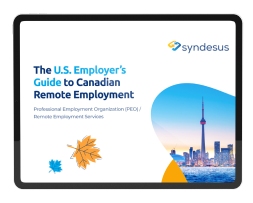There is a relatively narrow path for foreign-born graduates to attain the H-1B work visa and seek permanent residence in the US
After graduation, F1 visa holders may be granted an additional 12 – 24 months of residence as an Optional Practical Training (OPT) period. This allows graduates to start a new job and gain valuable work experience while beginning the H-1B visa application process.
Without an H-1B work visa or some other legal means of staying in the country, some of these valued employees are left with no choice but to leave.
During the OPT period, employees are able to prove themselves as productive and important assets to their employer. If a company decides they value their new worker, they may choose to seek an H-1B visa to keep them on staff. Once the OPT period expires, a worker needs to have been granted an H-1B through their employer.
Without an H-1B work visa or some other legal means of staying in the country, some of these valued employees are left with no choice but to leave
An Uncertain Outcome for H-1B Holders
Immigration policy in the US has become stricter in recent months and years, reducing the number of H1B visas available and thereby making it even more difficult for foreign-born US graduates to find work.
Oftentimes, a US company that under other circumstances would gladly hire a foreign-born worker is unable to do so. The tightening of immigration policy puts both foreign-born workers and their prospective employers in a tough situation.
Frequently, tech companies that want to hire talented foreign-born workers are forced to exclude these candidates due to visa shortages. This is a lose-lose, with both workers and tech companies missing out.
Fortunately, leaving the US after graduation does not necessarily mean leaving US work opportunities and North America behind.
Consider Canada as your Plan B (or Plan ‘C’!)
One sometimes overlooked but excellent route for foreign-born US graduates is to immigrate to Canada instead. Living in Canada does not necessarily mean finding work with a Canadian company.
In fact, by working with Syndesus, small and medium-sized US tech companies are able to save money by employing engineers residing in Canada.
Canadian immigration policy, specifically the Global Skills Strategy policy, was put in place to attract educated foreign-born workers to immigrate to Canada and begin the path to Canadian citizenship. If staying in the US is not feasible, Canada is an excellent option for foreign-born graduates of United States universities.
A PEO, as opposed to simply hiring a worker on contract who happens to be in Canada, handles employment law and payroll in Canada, allowing the employee to truly be a part of the company while complying with Canadian and US laws.
Many tech companies and companies in other high-skill, knowledge economy sectors are learning that it is surprisingly easy to employ workers who reside in Canada through a Professional Employment Organization (PEO) like Syndesus. For a recent US graduate seeking a job with a US company that cannot obtain the required visa for their new hire, this strategy is a godsend.
How Syndesus Helps H-1B Visa Holders Relocate to Canada
By working with Syndesus, a prospective employer is able to hire talented engineers and tech workers and work around US immigration policy by having them work remotely from Canada.
A PEO, as opposed to simply hiring a worker on contract who happens to be in Canada, handles employment law and payroll in Canada, allowing the employee to truly be a part of the company while complying with Canadian and US laws.
If you haven’t secured a US job, consider getting hired directly in Canada. Path to Canada can match you with a Canadian employer willing to sponsor your work visa. Once you’re hired, you can begin working in as little as 30 days.
Are you a US employer looking to employ remotely through a Canadian PEO? Schedule your free Canadian PEO consultation.







